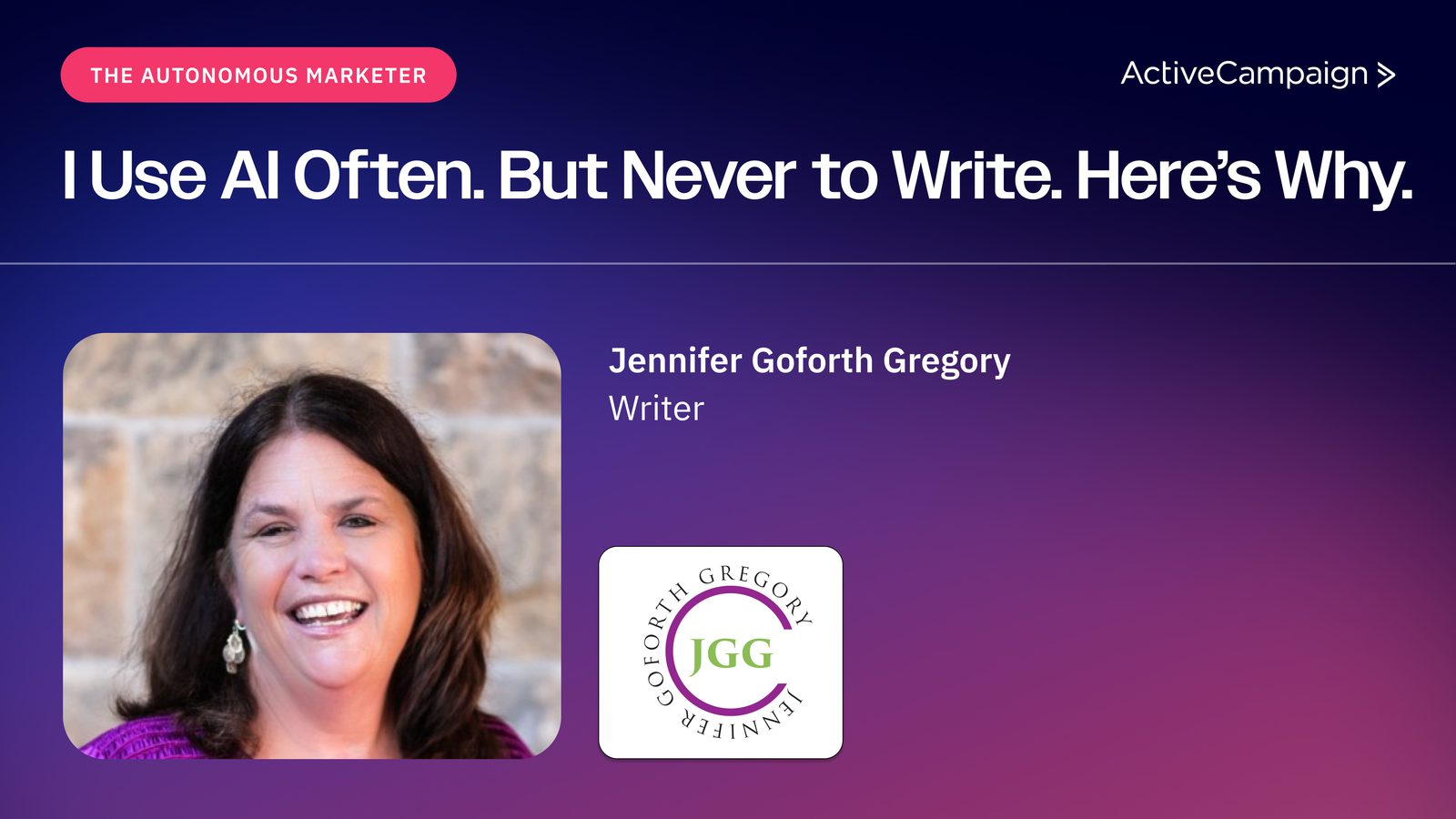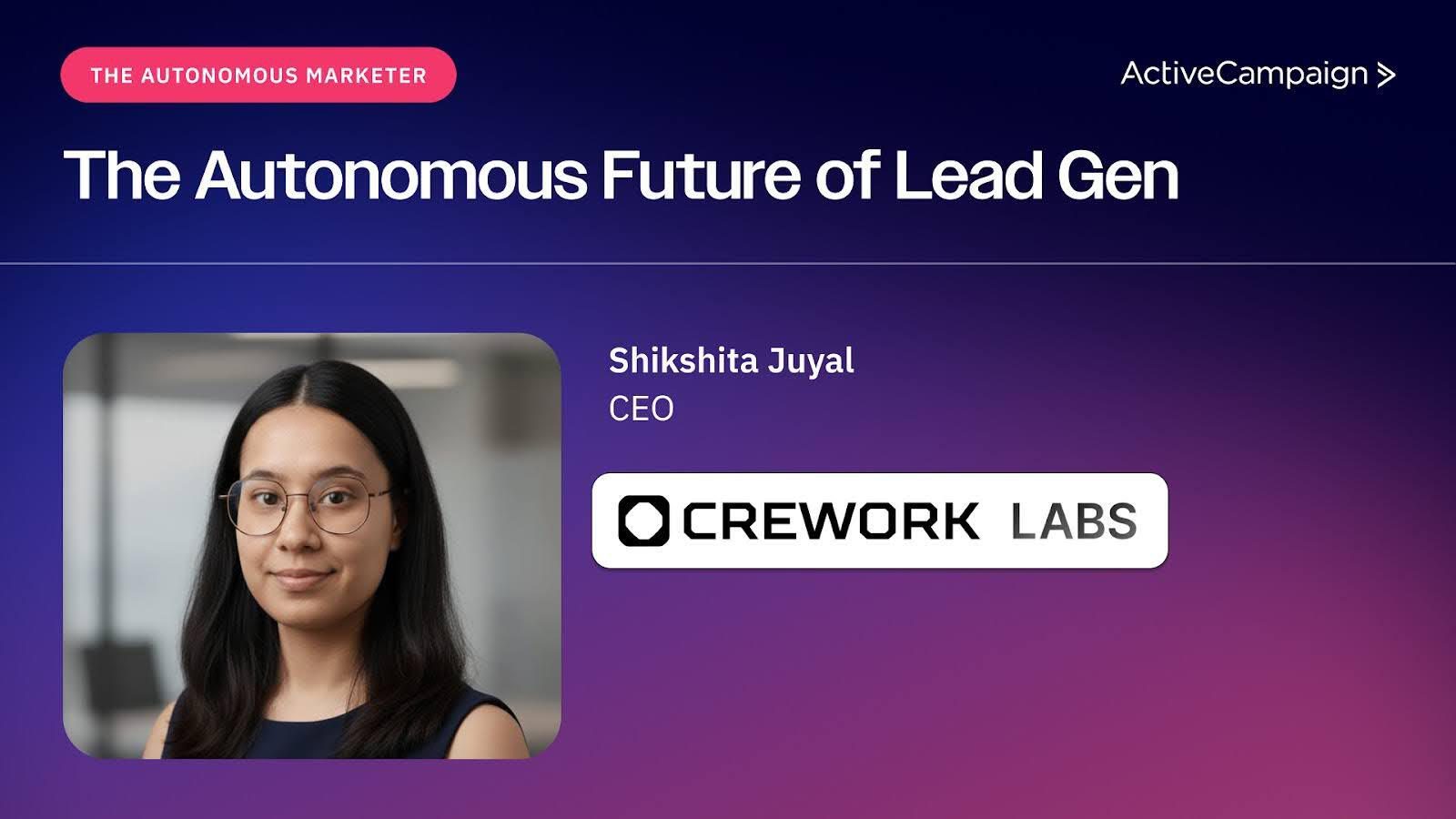http://fantastic.wistia.com/medias/ajg109pp9c?embedType=async&videoWidth=640How can you rank in Google?Ranking in Google ultimately comes down to two factors.
- Authority
- Relevance
Building authority in Google
How do you build authority in Google?Right now, links pointing to your site are the most important factor that affects your authority. SEO tools like Moz have created the concept of “Domain Authority,” which is a number from 1–100 that shows how easy it will be for you to rank in search results.You can check your Domain Authority for free using Moz. Once you have that information, you can use it to see what kind of keywords you should try ranking for.
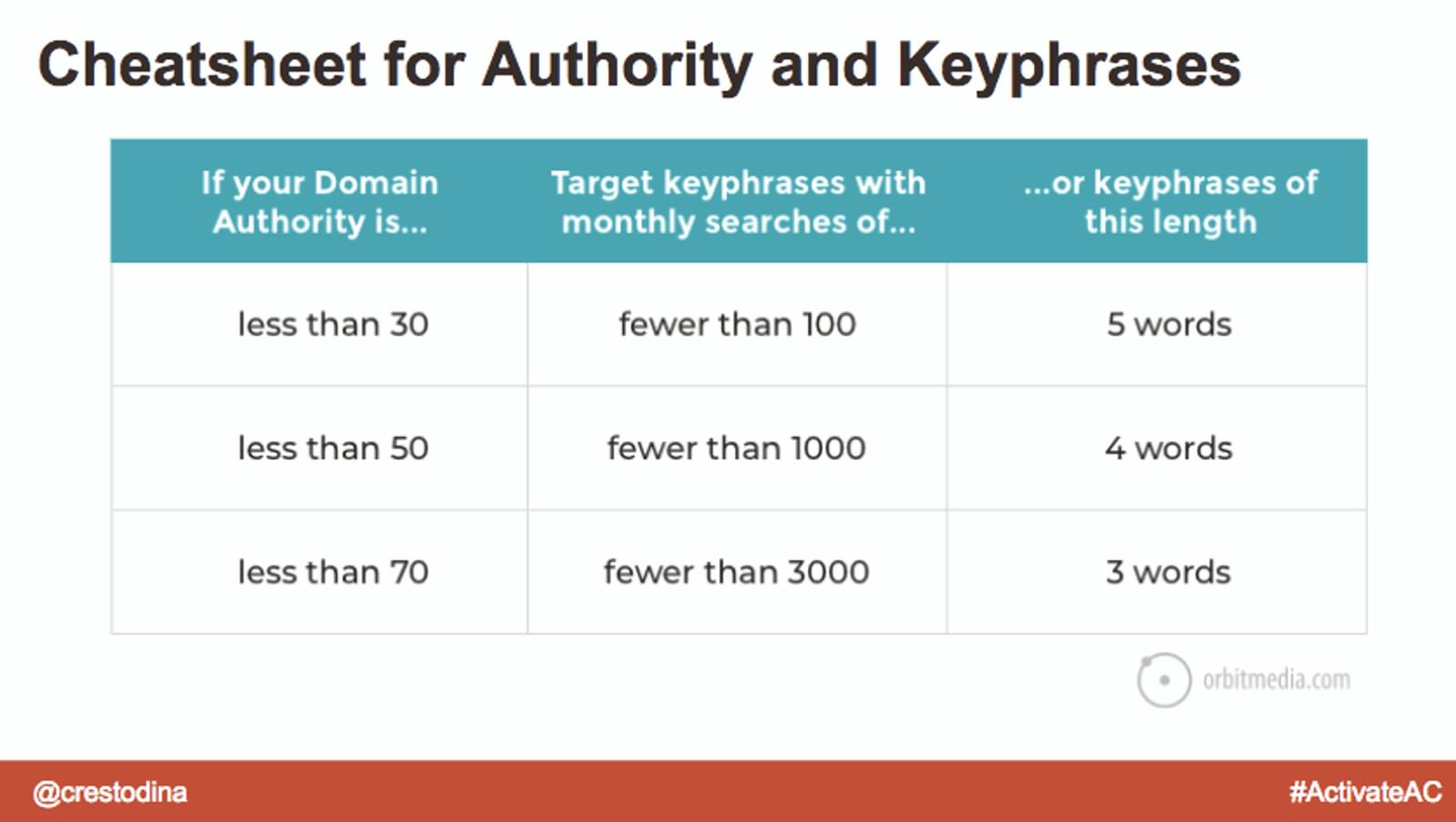
SEO ranking cheat sheet
How can you increase your Domain Authority? By building links. But how can you build links in a scalable way? Anyone who has ever sent link building emails knows that their success rate is pretty low.The answer? Make some friends!Guest post on other websites. Seek out content creators and include their quotes in your work—other creators are the people most likely to link to you...because they also create content!This approach to link building makes your blogging more effective as a whole.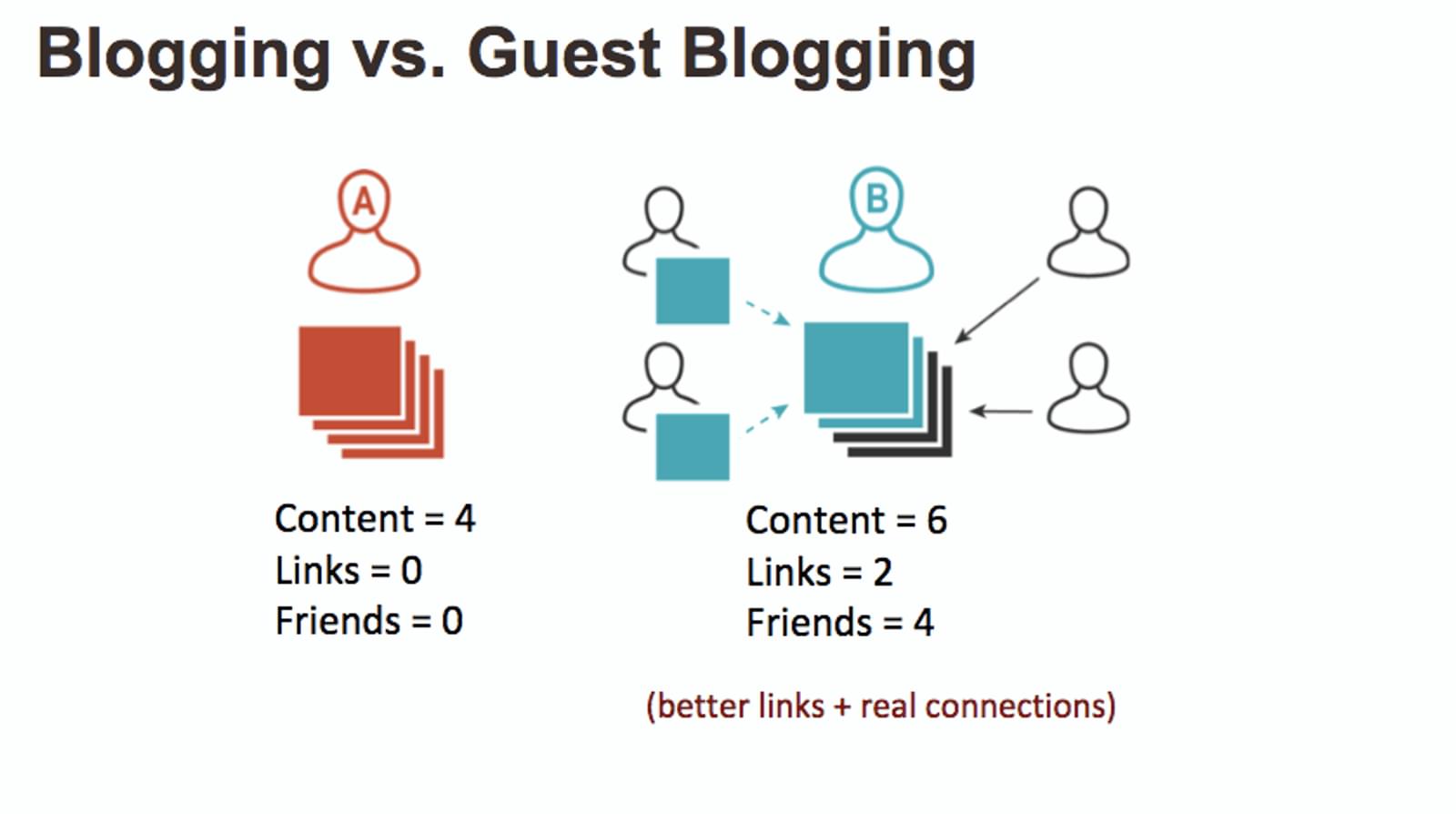
Social link building
Signaling relevance in Google
How can you show Google that your content is relevant to what people are searching for?Keywords!SEO is evolving past the basic keyword optimization and research that was common as recently as 5 years ago. But it’s still important to understand the basics of keyword research.When you try to decide what keywords to rank for, you’re looking for three factors.
- High search volume
- Low competition
- Relevant to your business
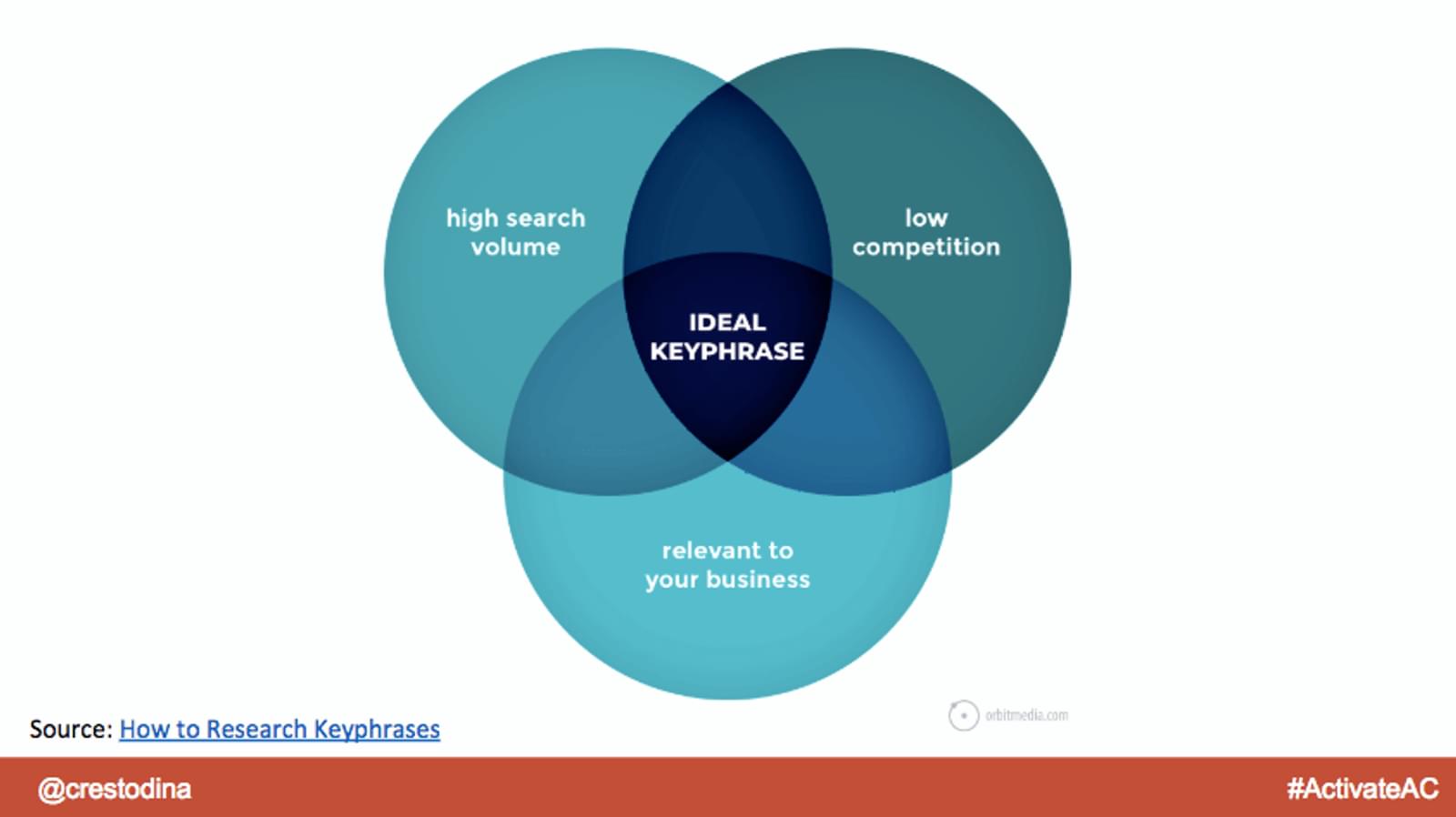
How to choose a keyword for your business
How do you find good keywords? There are a lot of keyword research tools, but Google Keyword Planner is free, and a good place to start.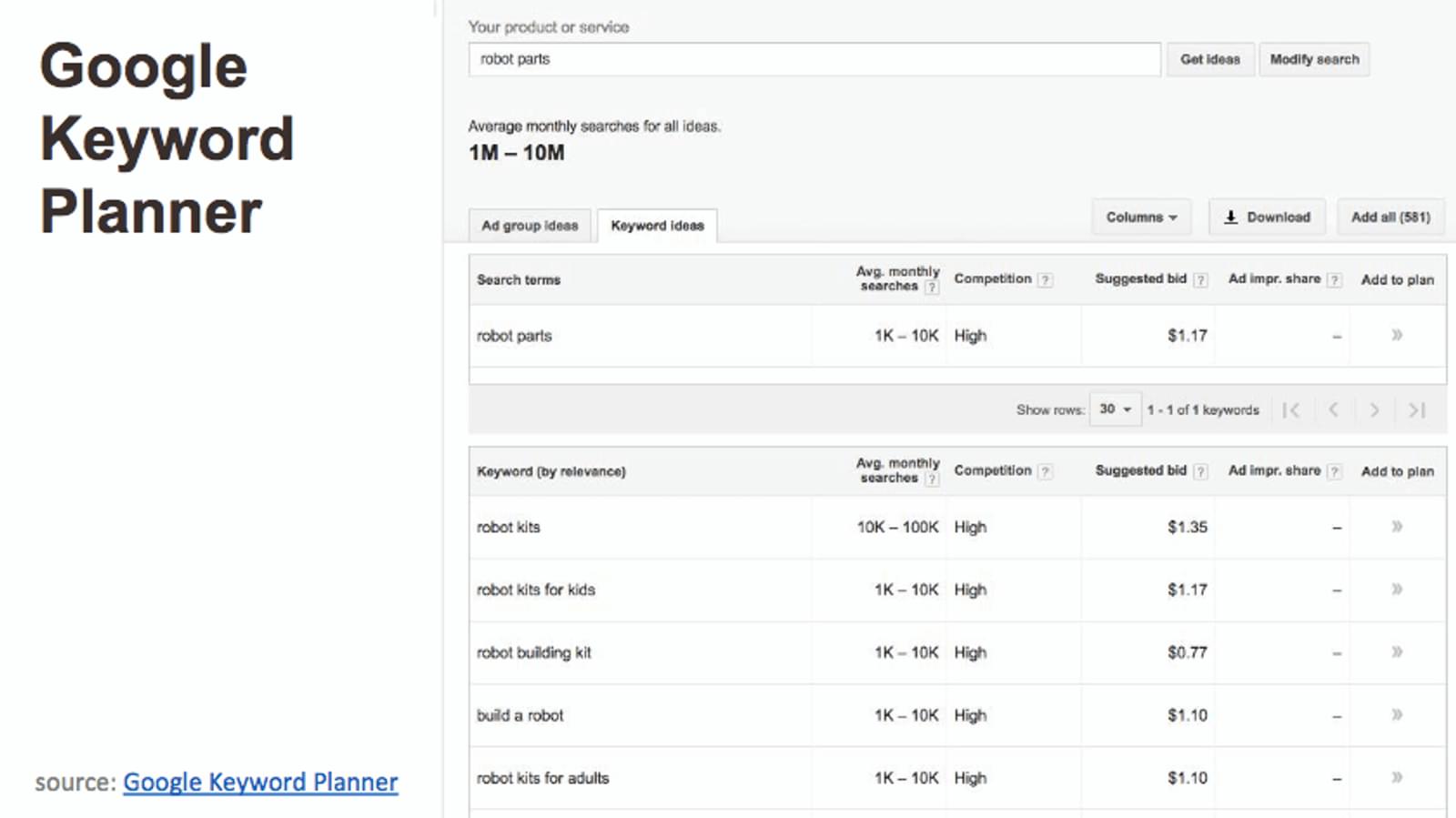
Ok, and once you have a primary keyword, where do you need to put it on your page?Andy pointed out that Google cares about providing the best experience for searchers. Searchers only care about the stuff that they can see—which means that keywords matter more when they’re in more visible areas of a website.Places to use a keyword:
- Page title (<title>)
- <h1> header
- Body text (2-4 times every 500 words)
- Meta description
- Image alt text
- File names
- Meta keywords
Beyond simple keyword research: Target the broader topic
Google used to rank the pages that had the most keywords jammed inside them. Not anymore.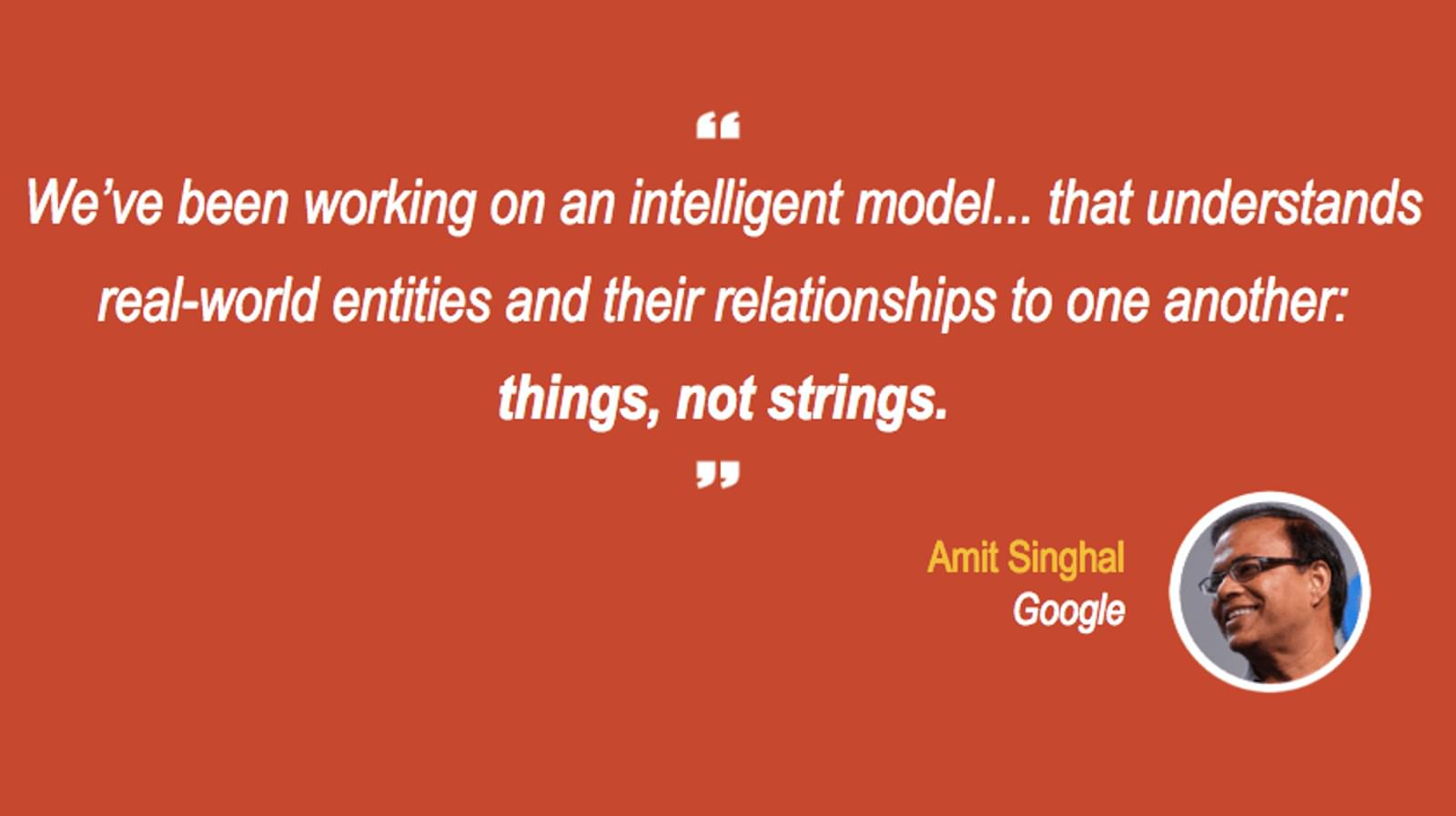
As Google becomes smarter and smarter, it’s able to learn the overall topic that a page is covering. Instead of looking for keywords that exactly match the search, Google looks at the page to see how related it is to the general question the keyword represents.How can you signal relevance to an entire topic? Better research. Andy shared an example from his article on website footers.When you start typing something into Google, Google gives you suggestions. That’s Google telling you what it thinks is relevant to your search!A tool like keywordtool.io scrapes all of Google’s suggestions and gives them right to you.
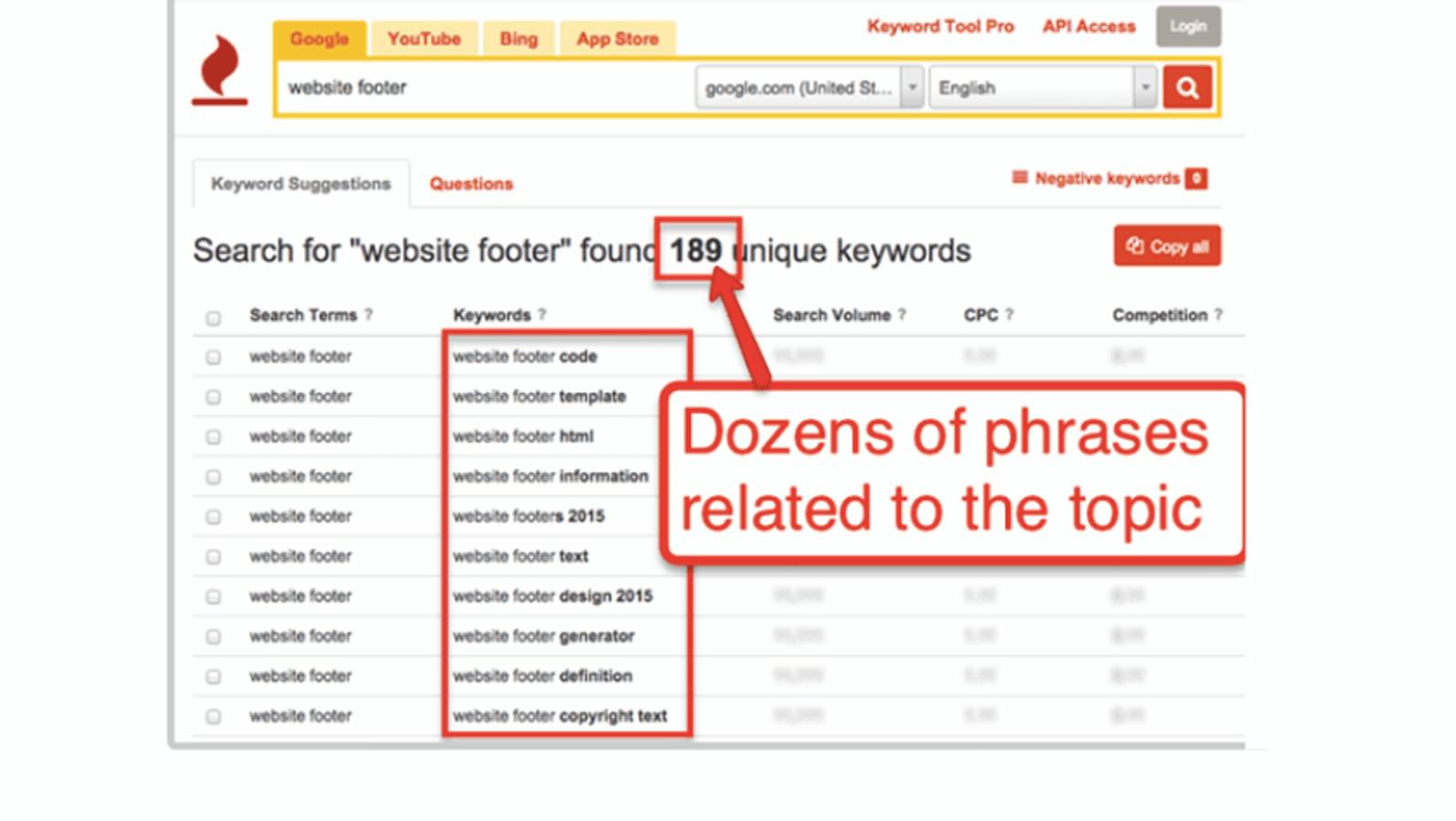
Other free tools include Answer The Public and Ubersuggest. On the paid side, SEMrush, Moz, and Ahrefs are the most common tools (and have some free functionality).Andy wound up with a long list of keywords related to his topic of website footer design. Then all he needed to do was include them in his piece as he was writing.
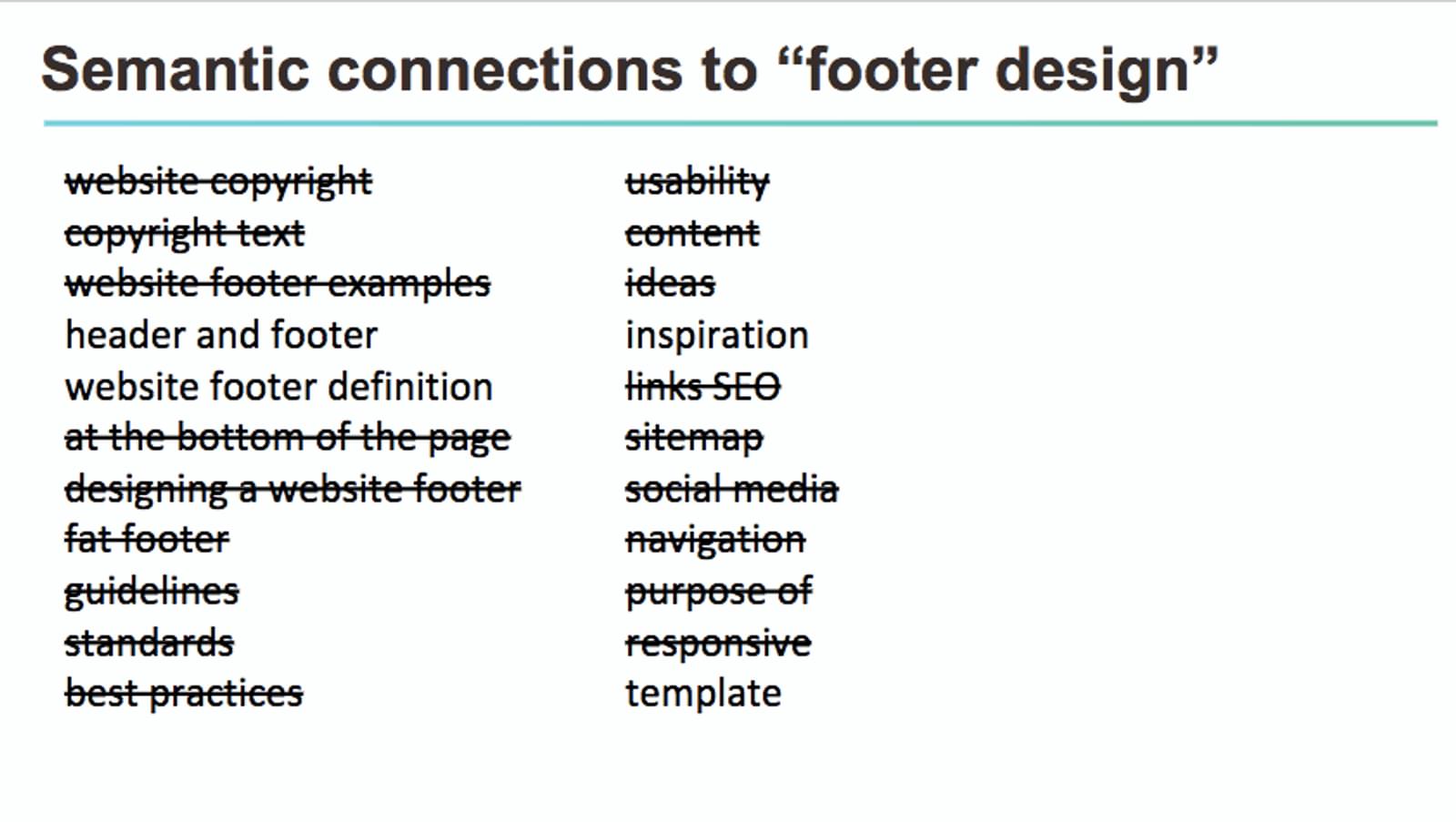
The result? A high ranking blog post that’s generated 60,000 unique pageviews and over 500 links.
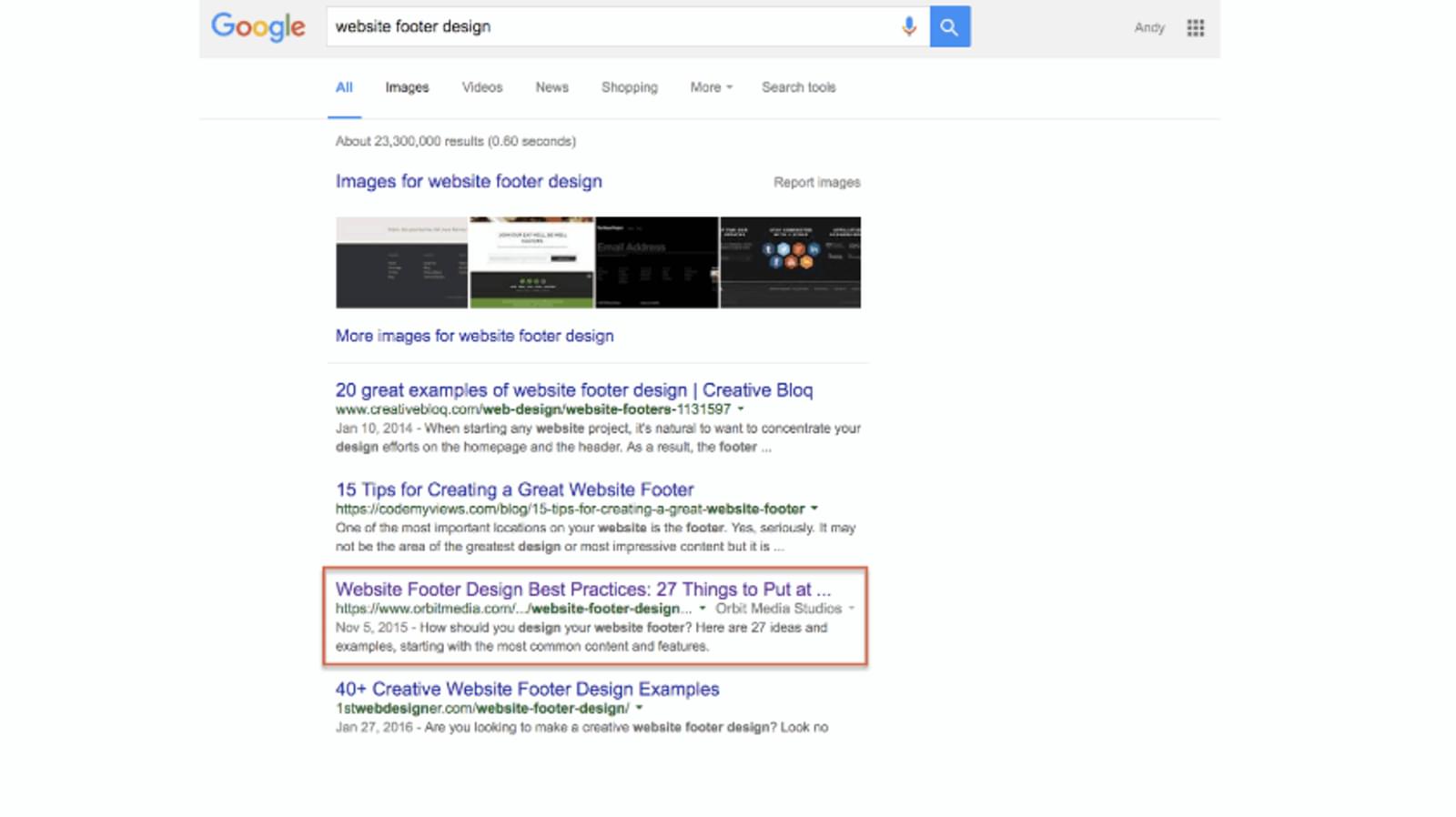
Because it’s optimized for the overall topic of website footers, it ranks for over 2500 different phrases.
The third search factor: Happiness
How is happiness a ranking factor? Well, as Andy said in his talk: “If someone searches for a keyword and they find you, would they be happy?”Google wants to give people the results that are most relevant to the things they are searching for. Because of that, they use “user interaction signals” to tell how much people enjoy the pages they visit from search.Signals like:
- Click through rate from search results pages
- Bounce rate
- Time on page
- Headers, subheads
- Bullet lists, numbered lists
- Bolding and Italics
- Internal links
- Multiple images

But note: it doesn’t necessarily mean short content.Long content can actually provide a better user experience than short content. Why? Because it answers more of people’s questions.Also, it’s better for your marketing by almost every metric.Flipping through slides, Andy shared data on the effectiveness of long content.
- Long content gets shared more
- Long content attracts more links
- Long content correlates with high rankings
- Long content generates more leads
How can knowing about semantic SEO help you in ActiveCampaign?
ActiveCampaign isn’t an SEO tool. But understanding how Google decides what content to show in search results can help you use ActiveCampaign better.Why? It all comes down to this quote from Andy.“If someone searches for a keyword and they find you, would they be happy?”When someone comes to your website, there are a few goals in play:
- They are looking for an answer to a question
- You want to attract the right people to your website
- They are going to leave as soon as they get their answer
- You want to get their contact information and stay in touch
“Message matching” with ActiveCampaign Forms and a welcome series
By now, you’ve probably tested out a “sign up for our newsletter” call to action.I’m going to guess it didn’t go all that well.With email inboxes crowded, most people aren’t really looking for another random newsletter to sign up for.But email marketing is a still a huge, high-ROI marketing channel. People do sign up for email lists—they just don’t do it on generic forms that offer vague benefits.
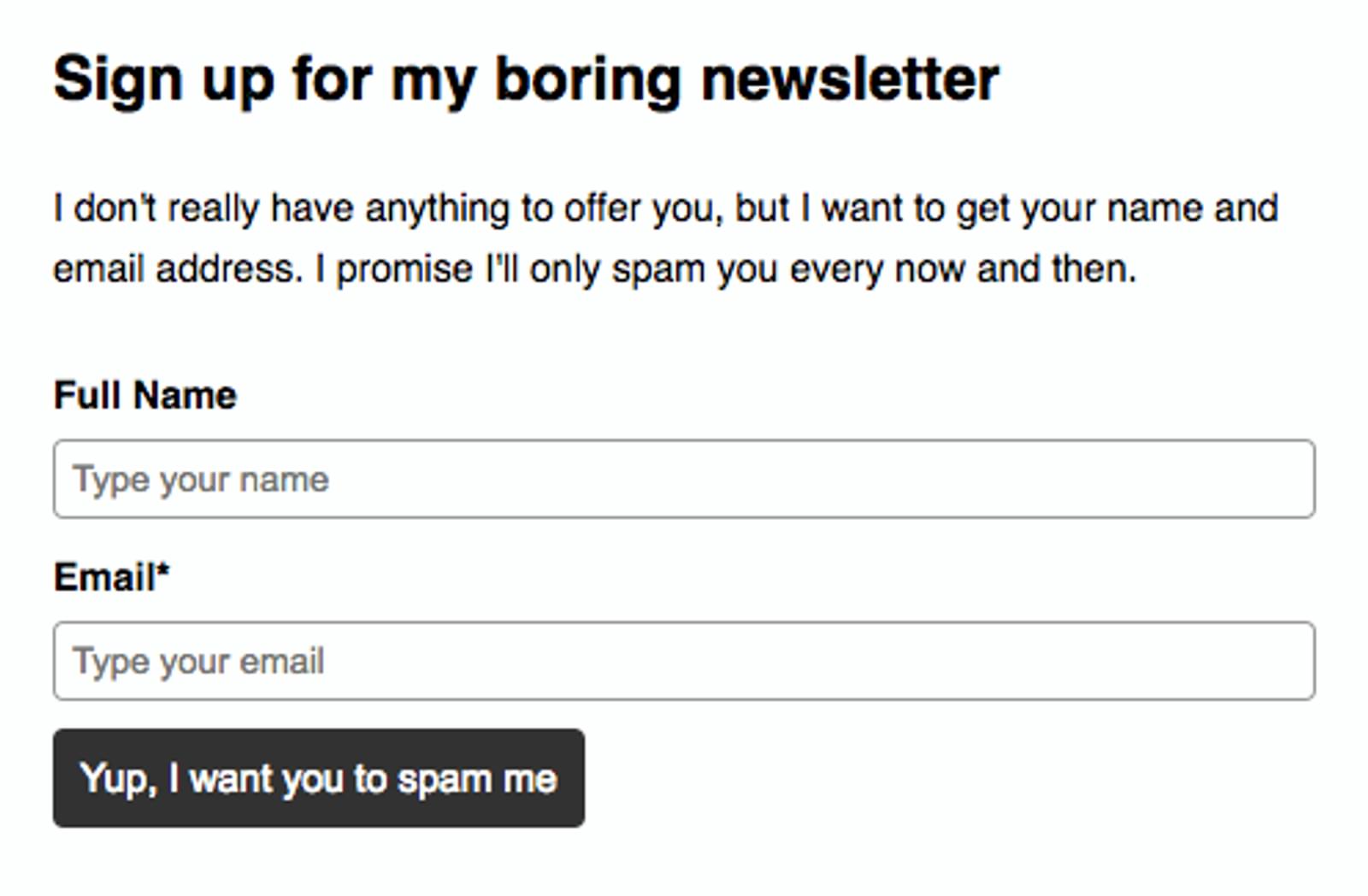
If most newsletter forms were totally honest
How can you convert more website visitors into contacts (and leads, and customers)?Message matching.Message match your visitor’s “searcher intent”
People who come to you from Google have a specific searcher intent—a specific problem they’re trying to solve.So if you want to convert them into contacts...offer them more stuff related to their problem!You can offer a lead magnet, or just highlight a specific benefit in the copy for your CTA.Once you collect contact information, you can send people through a welcome series that gives them more information on the specific problem they were trying to solve.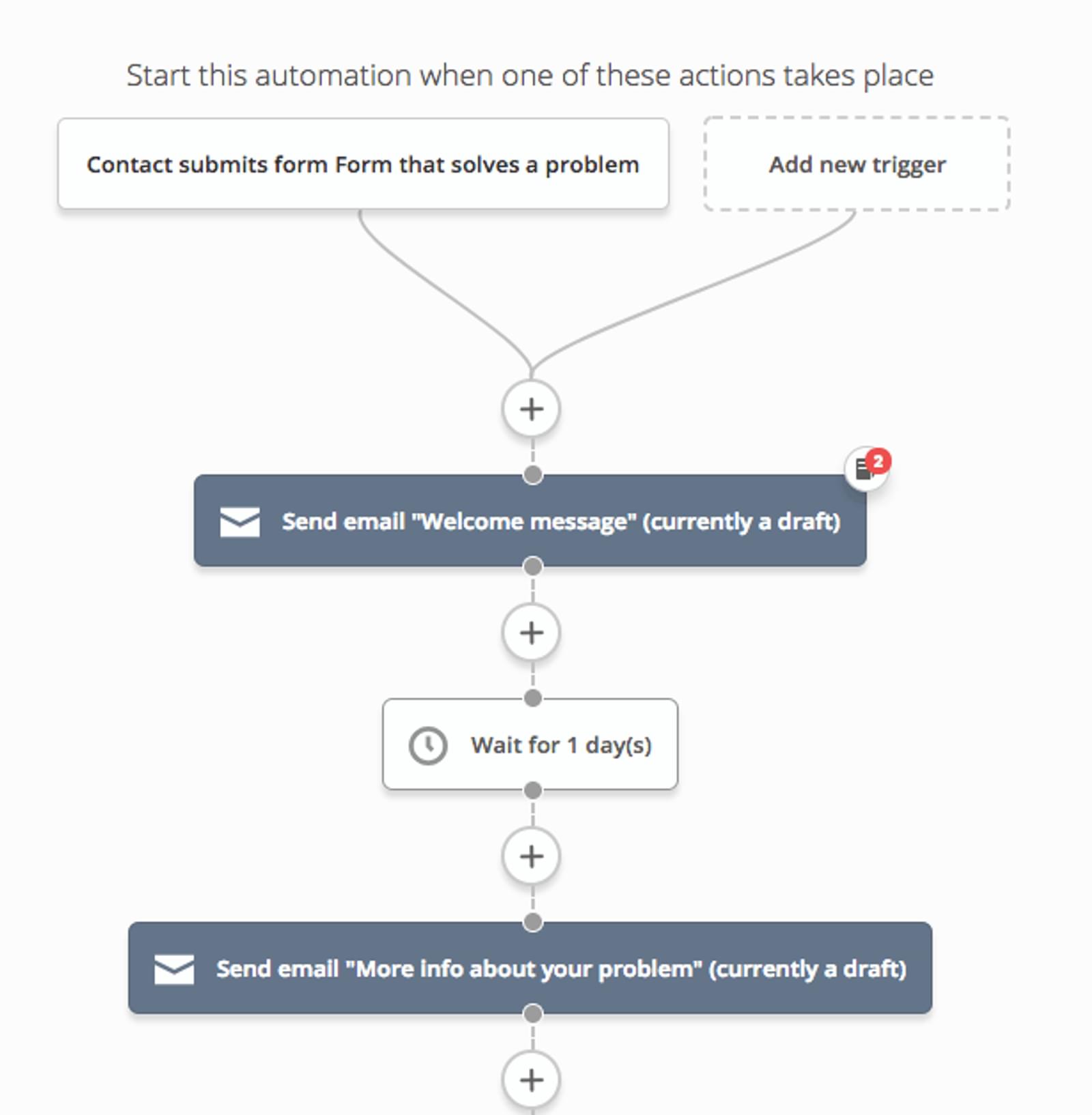
This is possible because ActiveCampaign lets you create as many custom forms as you like. Specific forms can be used to trigger automations, and you can even trigger actions based people completing the form itself.
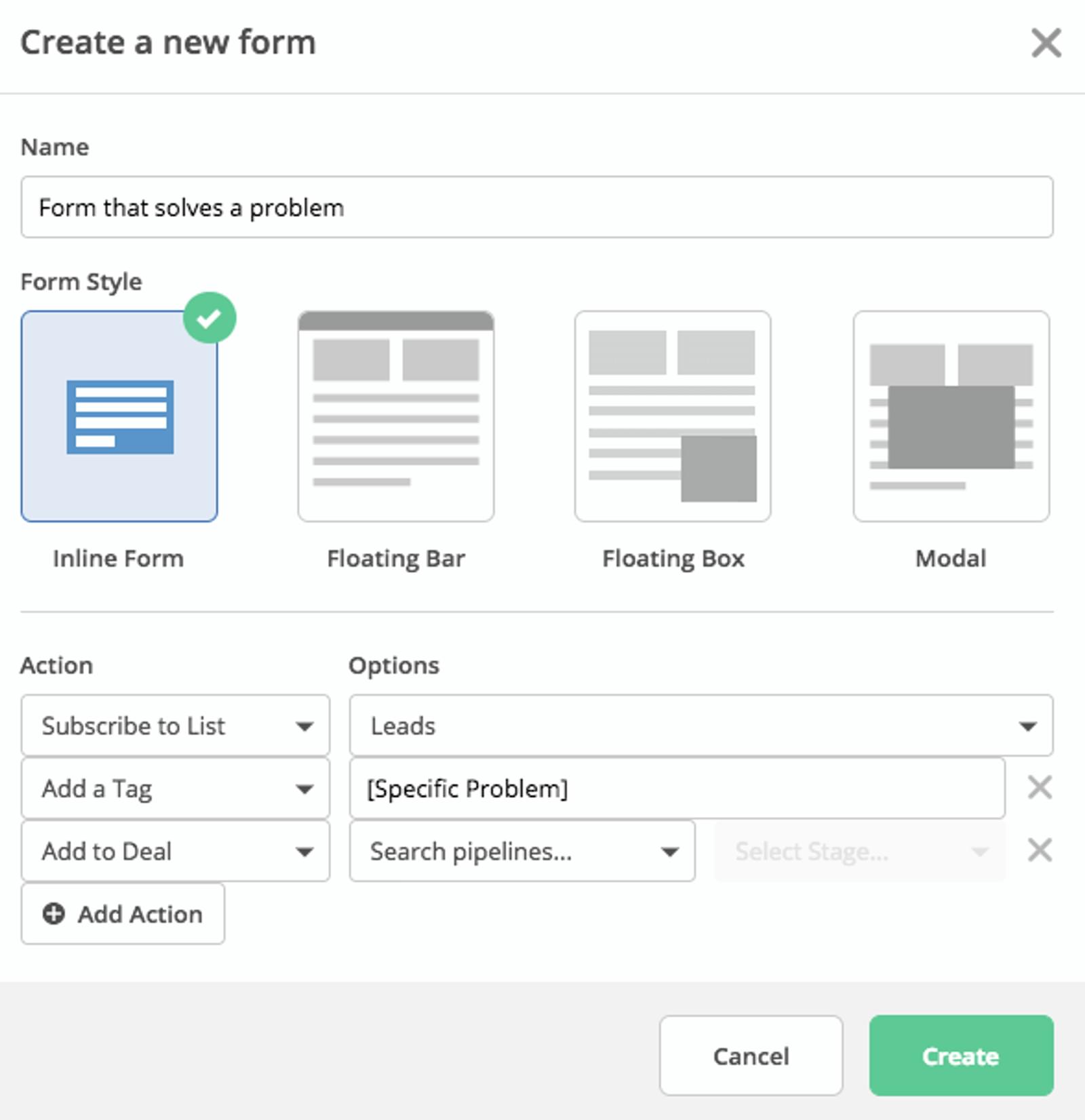
A form that adds people to a list and a deal while segmenting
That means you can create as many different lead magnets and welcome automations as you need.So when someone finds you because you did great semantic SEO, you don’t need to offer them something generic.Instead, you can make a specific offer that’s exactly what they’re looking for.Conclusion: The future of SEO
The keyword stuffing of the past doesn’t work anymore.Instead, as Google gets smarter and smarter, the future of SEO is in creating content that answers questions. That solves problems. That signals relevance to an overall topic instead of trying to optimize for a single 3-word phrase.Once you do signal relevance, offer more. Give more information. Solve related problems.In ActiveCampaign, use calls to action that are customized for each of your highest performing posts—so that you can give website visitors exactly what they want.Ask yourself: “If someone searches for a keyword and they find you, would they be happy?”



